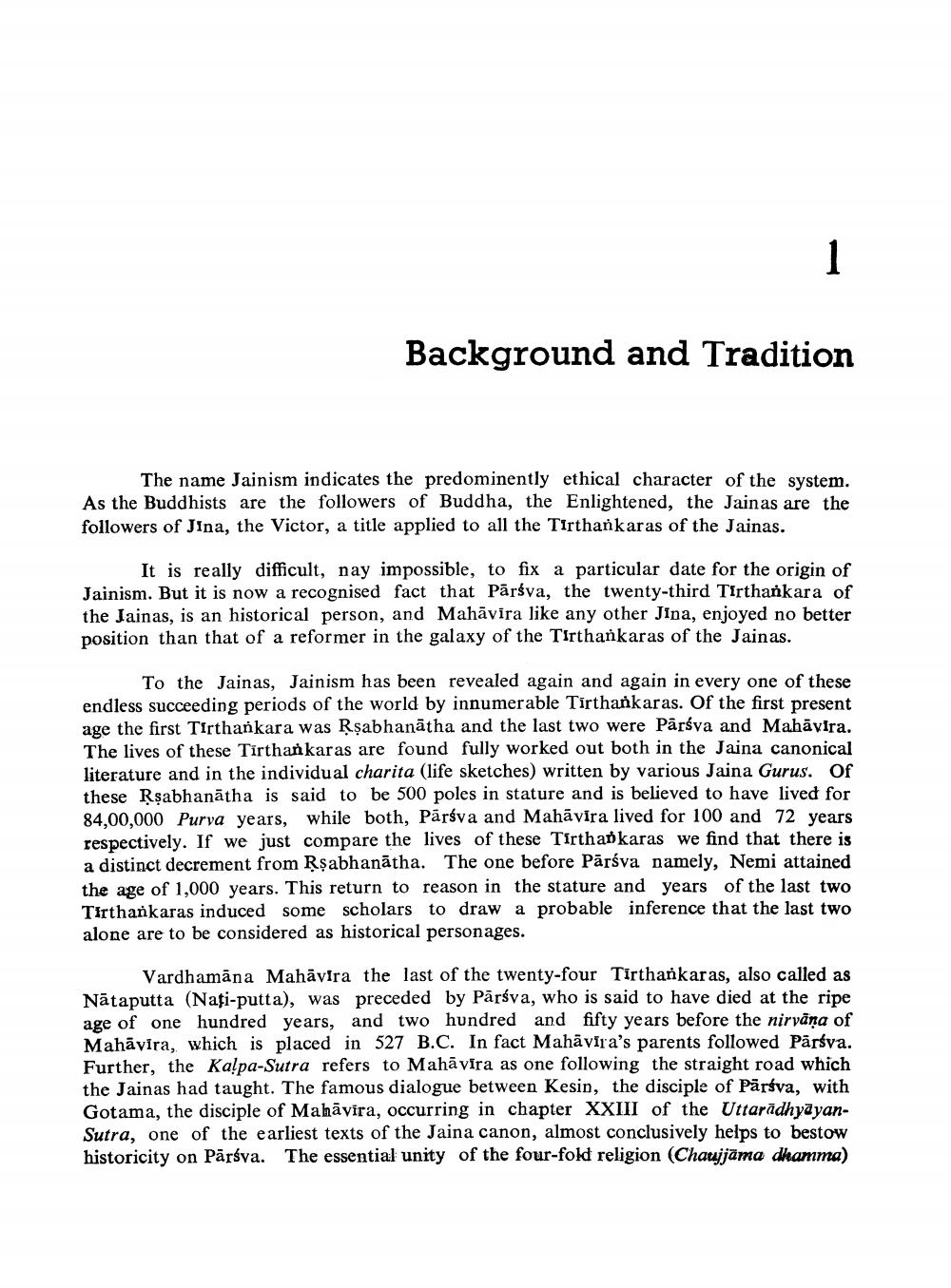________________
Background and Tradition
The name Jainism indicates the predominently ethical character of the system. As the Buddhists are the followers of Buddha, the Enlightened, the Jainas are the followers of Jina, the Victor, a title applied to all the Tirthankaras of the Jainas.
It is really difficult, nay impossible, to fix a particular date for the origin of Jainism. But it is now a recognised fact that Pārsva, the twenty-third Tirthankara of the Jainas, is an historical person, and Mahāvira like any other Jina, enjoyed no better position than that of a reformer in the galaxy of the Tirthankaras of the Jainas.
To the Jainas, Jainism has been revealed again and again in every one of these endless succeeding periods of the world by innumerable Tirthankaras. Of the first present age the first Tirthankara was Rşabhanātha and the last two were Parśva and Mahāvira. The lives of these Tirthankaras are found fully worked out both in the Jaina canonical literature and in the individual charita (life sketches) written by various Jaina Gurus. Of these Rşabhanātha is said to be 500 poles in stature and is believed to have lived for 84,00,000 Purva years, while both, Pasíva and Mahāvira lived for 100 and 72 years respectively. If we just compare the lives of these Tirth ankaras we find that there is a distinct decrement from Rşabhanātha. The one before Pārsva namely, Nemi attained the age of 1,000 years. This return to reason in the stature and years of the last two Tirthankaras induced some scholars to draw a probable inference that the last two alone are to be considered as historical personages.
Vardhamana Mahavira the last of the twenty-four Tirthankaras, also called as Nātaputta (Naţi-putta), was preceded by Pārsva, who is said to have died at the ripe age of one hundred years, and two hundred and fifty years before the nirvana of Mahāvīra, which is placed in 527 B.C. In fact Mahavira's parents followed Pārsva. Further, the Kalpa-Sutra refers to Mahāvīra as one following the straight road which the Jainas had taught. The famous dialogue between Kesin, the disciple of Pārsva, with Gotama, the disciple of Mahāyira, occurring in chapter XXIII of the UttarādhyāyanSutra, one of the earliest texts of the Jaina canon, almost conclusively helps to bestow historicity on Pārsva. The essential unity of the four-fold religion (Chaujjāma dhamma)




